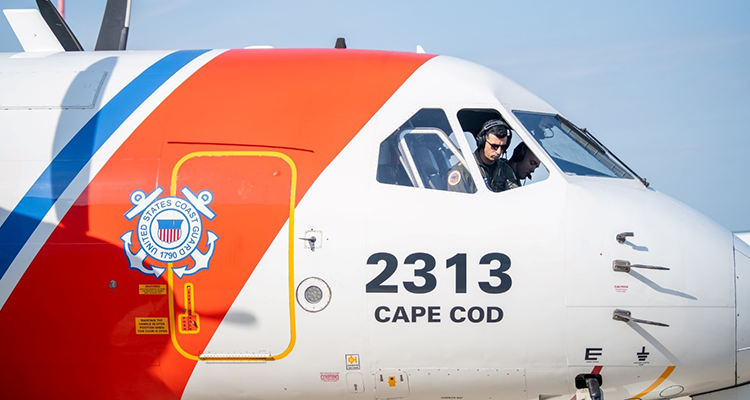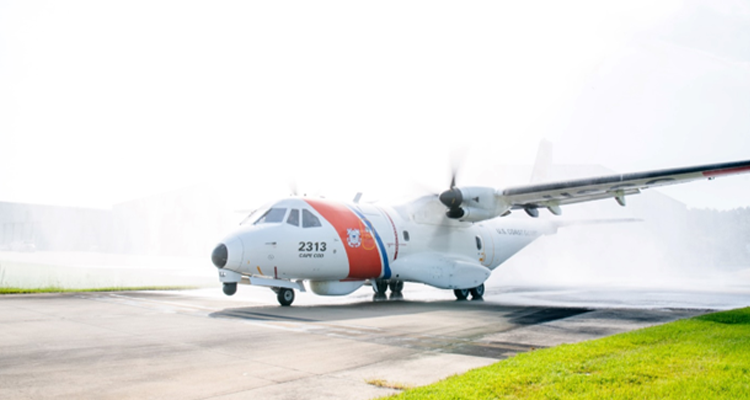Sept. 13, 2024 —

The crew of CGNR 2313 prepares the aircraft for takeoff from the Coast Guard Aviation Logistics Center (ALC) in Elizabeth City, North Carolina, and delivery to Coast Guard Air Station Miami. This is the 18th and final HC-144 to be outfitted with the Ocean Sentry Refresh and Minotaur mission system architecture. U.S. Coast Guard photo by the Aviation Logistics Center.
The Coast Guard completed the upgrade of its HC-144 Ocean Sentry medium range surveillance aircraft fleet with the delivery of the 18th and final plane to undergo the Ocean Sentry Refresh (OSR) and integration of Minotaur mission system architecture. On Aug. 6, a crew flew CGNR 2313 from the Aviation Logistics Center (ALC), the site of the upgrade work, to Air Station Miami, where the plane is now based.
The delivery marks the end of the decade-long modification effort, restoring full fleet complement and providing advance situational awareness and mission system capabilities necessary to carry out missions around the clock.

CGNR 2313 receives the traditional “water salute” as it prepares to depart ALC for delivery to Air Station Miami. U.S. Coast Guard photo.
Upon completion of the upgrade, the aircraft have been redesignated as HC-144Bs. The Bravo iteration merged two significant upgrade projects, OSR and Minotaur missionization.
OSR upgrades the aircraft with a new flight management system, which serves as the primary avionics computer for communication control, navigation and equipment monitoring.
Minotaur missionization integrates installed sensors and radar and provides dramatically improved data fusion as well as information processing capabilities.
The modifications to the HC-144B have made missions faster and more effective, according to Pesebra Cartwright, program manager for the Medium Range Surveillance Aircraft Program. “It enables crews to fly with lower cloud ceilings, allowing on-scene coverage.”
Cartwright added, “Feedback from the fleet on the HC-144B aircraft is overwhelmingly positive.”
He quoted a pilot as saying, “I’d rather fly an HC-144B with one operational Minotaur mission system workstation than to fly an HC-144A with a full function legacy mission system pallet.”
On search and rescue missions, the operator can locate vessels matching the search profile faster using the improved radar software. The high-definition forward-looking infrared (FLIR) sensor provides better pictures to quickly identify vessel type, name and people onboard. Also, the improved direction-finding equipment provides location information based on the signal from a 406 MHz Emergency Position Indicating Radio Beacon, allowing crews to fly directly to position, a significant advancement over the Alpha configuration’s limits of following a line of bearing. “This undoubtedly leads to more lives assisted and/or saved,” Cartwright said.
Faster and more effective applies to law enforcement missions as well. The improved radar allows for quicker location of vessels suspected of transporting illegal drugs or undocumented migrants or fishing in prohibited areas. The high-definition FLIR then provides better pictures to properly document the vessel while providing a compass location to a Coast Guard intercept vessel. With this upgrade, HC-144B mission system operators are now able to share Minotaur data with other Minotaur-equipped aircraft, ultimately improving mission effectiveness.
For more information: Medium Range Surveillance Program page and Minotaur Program page